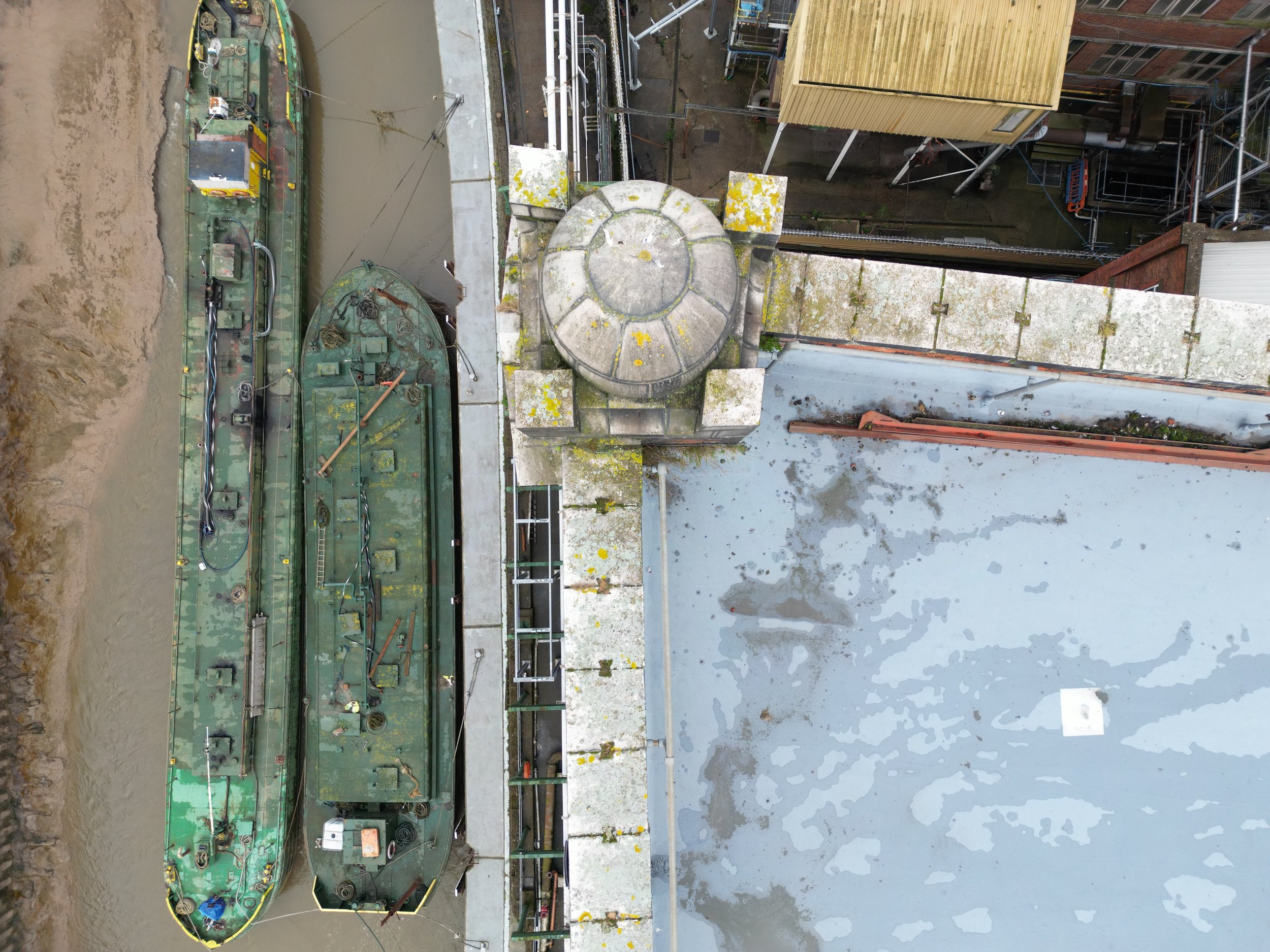Revealed: Drone pictures give fresh perspective on industrial giant named after goddess of magic
TOWERING: The Isis oil mill silo beside the River Hull. Pictures by Andy Medcalf Photography
By Angus Young
It takes its name from the ancient Egyptian goddess of magic who possessed the power to rule both the natural world and the skies above.
For over a century, the Isis oil mill silo has similarly towered over the River Hull.
Now plans have been submitted to demolish disused buildings around it to make the huge structure even more visible as a reminder of the city’s industrial heritage.
Owners Cargill propose to re-develop the site once it is cleared, leaving the mill as a show-stopping centrepiece.
Exclusive drone images for The Hull Story show the gigantic Grade II listed building like never before – including graffiti on one of its three rooftop domes.
The words ‘Leeds Rifles’ and ‘66 RA’ etched onto the steel-plated dome date back to the Second World War when an anti-aircraft unit from the Royal Artillery regiment was stationed on the roof. During the first World War, the roof was used as a lookout for Zeppelin raids.
In recent years an illuminated two-sided Father Christmas figure has traditionally occupied a rooftop spot during the festive season.
Taken by Andy Medcalf, the drone images also show in detail the glazed white tiles used for the lettering spelling out the mill’s name on the elevation facing Stoneferry Road as well as the elaborate brick cladding and decorative concrete work favoured by architects Gelder & Kitchen in their design.
A view from directly above the mill also reveals how the silo was designed with a subtle curve on one side to mirror the circle of the River Hull next to it.
The silo was built in 1912 using reinforced concrete for seed-crushing firm Wray, Sanderson and Company to dramatically increase storage space at the site and boost production of crude vegetable oil. As such, it helped cement Hull’s status as the central hub of the industry in the UK.
For a time the company led the field in crushing soybeans. Shipping records for 1923 show 74,566 tons of soybeans were imported into Hull that year, most of them destined to be taken by barge up the River Hull to the mill’s wharf.
Having survived the Second World War unlike several other riverside mills in the city, it changed hands in 1947 when ownership was transferred to rival firm Premier Cake and Oil Mills which, in turn, was taken over by Croda in 1967.
American giant Cargill acquired the Morley Street site in 1985 but last year announced it was ending its oil refinery operations there.
Listed building status given to the silo in 1994 means it will remain while the now redundant plant and machinery around it is demolished.
The listing by Historic England says: “Reinforced concrete structure with brick cladding and concrete and faience dressings. Steel framed roof with glazed clerestory and ventilators, behind parapet. Square tower, four stages, 6x6 bays, with shallow buttresses rising the full height. Corner buttresses topped with pedimented niches and domes.
“On one corner, a square brick pedestal carrying the water tank. The top stage has six windows on three sides, and the name of the mill worked in white tile on the other. The interior is divided into square storage bins with concrete floors on cast-iron columns.
“This is the earliest surviving oil mill silo in Hull, and marks a radical change in buildings associated with the oilseed industry.”
In a heritage statement which forms part of the current planning application mapping out the demolition proposals, building conservation specialists Lion Heritage say: “The silo is the most prominent building on the site and, as demonstrated by its Grade II listing, also the most significant building within the mill complex owned by Wray, Sanderson and Co.
“The construction of the silo could be considered to mark the apogee of a seed crushing industry that had its roots dating in Hull to 1673.
“Aside from its architectural merit, the silo is significant for ist representation of the modernisation of the seed processing industry from one reliant on seasonal availability to one which could operate continuously once sufficient storage was provided on site.”
Become a Patron of The Hull Story. For just £2.50 a month you can help support this independent journalism project dedicated to Hull. Find out more here





